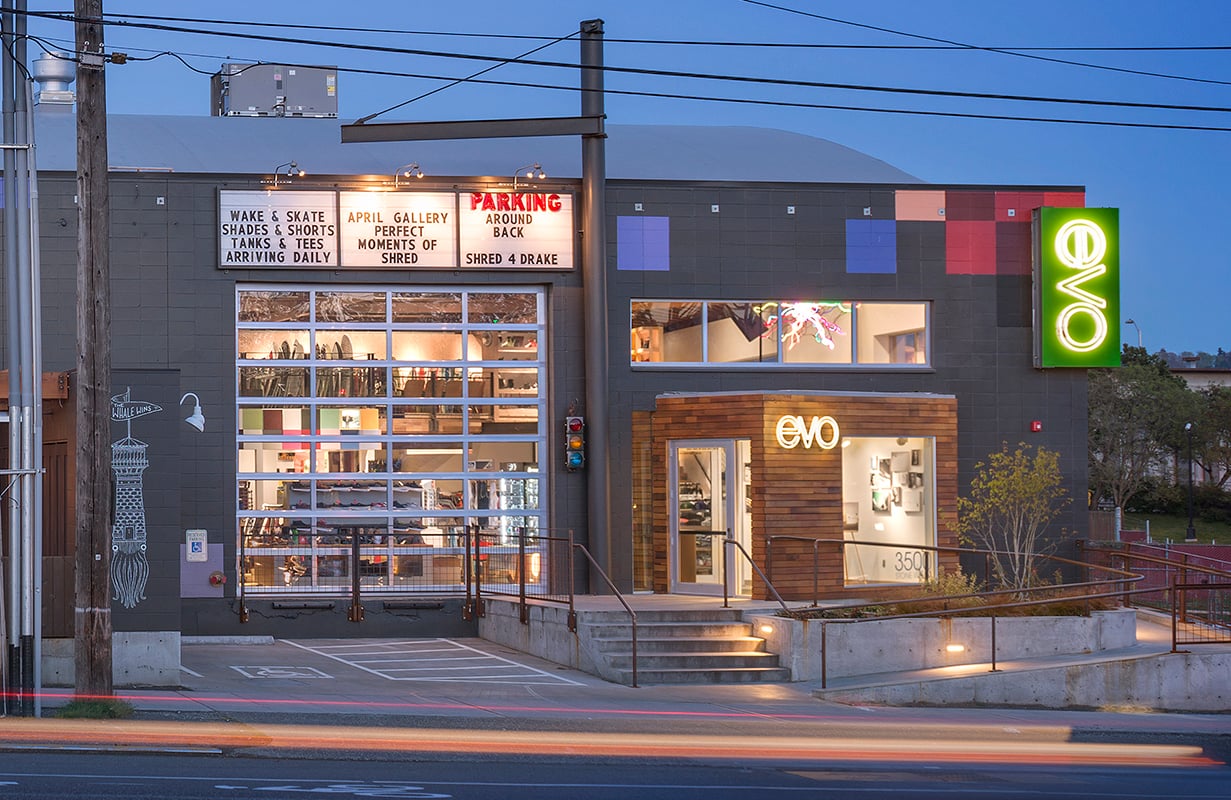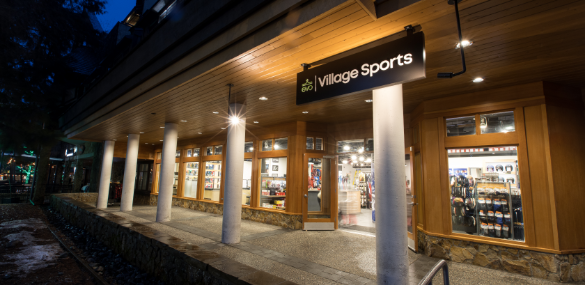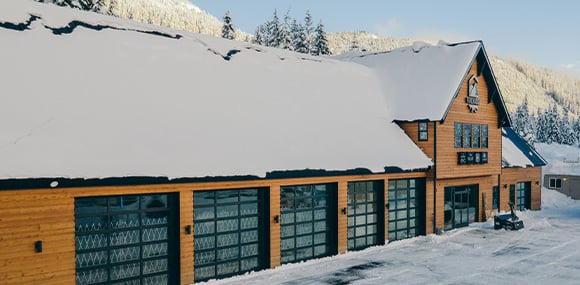How to Choose Alpine Touring or AT Ski Boots
By: evo Staff | Last Updated: October 10, 2025
Unlike regular ski boots, alpine touring (AT) boots are designed for both downhill skiing and uphill travel. AT boots typically have a rigid, supportive ski mode, with a "walk" mode that unlocks the spine of the boot to let your ankle and lower leg flex forward and back for walking uphill. AT boots often have a rockered rubber sole like a hiking boot that gives improved grip on slippery surfaces and lets you walk more naturally.
These boots are increasingly made with lightweight materials like Pebax®, Grilamid, and carbon fiber to save weight without sacrificing performance. There are a wide variety available for all different kinds of uses, from long endurance-oriented adventures to hard-charging descents. Below, we’ll breakdown a couple of important questions to ask yourself when choosing AT boots, and provide a couple of different categories to consider.
Things to Consider When Choosing AT Boots
These leading questions are meant to help you get an idea of what category of touring boots are right for you. It’s important to be honest with yourself here - you don’t want to end up with boots suited to a kind of skiing that you’re not actually going to be doing.
- What type of skiing do you plan to do in this boot? Aggressive big-mountain riding just outside of the resort, or week-long hut trips in the Alps?
- Do you plan to use this boot in the ski area, or strictly for touring?
- What style of ski bindings will you be using with this boot?
- What's your ability level, and how supportive of a boot do you need to ski all the conditions you might encounter in the backcountry?
Uphill vs. Downhill Performance
To some extent, every AT boot offers a compromise between uphill and downhill performance. Unfortunately, a boot can’t hike like your leather boots and descend like race boots. That said, touring boots have come leaps and bounds in the recent past, giving skiers a ton of great options that do both well. Using the questions outlined above, you can get a feel for where your priorities are and choose a boot accordingly. Here, we’ve broken down touring boots into a couple of categories by this uphill/downhill balance and their intended uses.
Mid-Range AT Boots
Some new AT boots come close to alpine boots in stiffness and downhill performance while adding great walk modes and lugged soles. These mid-range boots are suitable for aggressive skiers who don't want to completely give up the power and support of their alpine boots, but still want something that tours pretty well. Generally speaking, these boots have walk modes that don't offer quite as much range of motion as those in the fast and light category, but they'll perform much better in normal resort conditions. Super light boots, on the other hand, usually have a much better range of cuff motion for skinning and go uphill with less effort, but won't ski as well in challenging snow or drive wide skis with the same authority.
Most people find that a mid-range boot in the 1400 to 1600 gram range with 40 degrees or more of cuff movement is a good compromise. These types of touring boots will be best for skiers that prioritize downhill performance over uphill performance. However, heavier skiers, more aggressive skiers, or those looking to ski primarily in the resort may want to look for something burlier still.
Fast & Light AT Boots
Lightweight AT boots, generally under 1400 grams per boot, are a dream to skin uphill with, but usually sacrifice some downhill performance. How much skiing performance you’re willing to give up is highly personal and depends on ability level, skiing style, and fitness. These boots are best for fast-and-light touring, ski mountaineering objectives, and multi-day traverses where cuff mobility and light weight are priorities. These boots are not well suited to skiing inbounds and can lack the power or stiffness to drive longer and wider skis.
Burly or Crossover AT Boots
The burliest AT boots offer fantastic downhill performance, with very respectable walk modes suitable for short day tours. These boots generally fall in the 1600 to 2000 gram range, and are suitable for normal resort skiing in addition to light touring.
If you plan to use an AT boot for all of your skiing, both lift-served and touring, it helps to make an honest assessment of how much of each you’ll be doing and choose your boot with this in mind. Virtually all alpine boot makers are now producing models that allow the skier to use one boot for both lift skiing and touring, with very little compromise on downhill performance. For skiers looking for one boot to do it all, and folks who aren’t after long tours and big days skinning, these boots are your best bet.
AT Boot Fit
Comfort with AT boots is critical - you can't go down to the lodge and take your boots off when you're miles away from the trailhead. Many people skin with their top buckles loosened, allowing more fore/aft movement of the foot. Experienced backcountry skiers may fit their AT boots a little more generously than alpine boots in length.
There are fewer fit options in AT boots than in alpine boots. If you find an AT boot with the weight and features you like, you may or may not be able to get it in a narrower or wider fit. That means you may have to seek out the services of a professional bootfitter with experience in modifying AT boot plastics (often not the same as alpine boot plastics) to make the boot usable.
Many AT boots include a thermo-formable liner, which makes for a warmer and more accurate fit. Deal with fit issues before you head out on a trip - aching feet and blisters can be more than just a minor inconvenience in the backcountry.
Alpine Touring Boot & Binding Compatibility
Remember that not every AT boot will work with every alpine touring binding.
- Tech bindings require a boot with molded-in toe fittings and a slotted plate at the heel. If you wish to use these bindings, you will need to have a boot with these fittings.
- MOST AT boots and alpine boots will work with MOST frame AT bindings, but be sure to check the manufacturer’s recommendations. Boots with minimalist soles that do not conform to ISO 9523 specifications are compatible only with tech bindings.
- AT boots with rockered ISO 9523 Touring soles are not compatible with many Alpine bindings. Even if they "fit", release may not be consistent. Exceptions are Marker Sole.ID models, Tyrolia AAAttack AT models, and Salomon/Atomic MNC models, which are compatible with both types of soles.
- Some AT boots designed for performance downhill skiing offer interchangeable alpine and tech soles, which enable you to switch between alpine bindings and tech AT bindings with the same boots. These soles are normally available as an aftermarket option.
Figuring out which boot goes with which binding is not always easy to the untrained eye. Check out the guide below to learn more about boot/binding compatibility, and don't hesitate to contact evo's gear experts with questions.

Common AT Boot Questions:
- Can I use AT boots with my alpine bindings?
- It depends. Most crossover AT/alpine boots are designed to be compatible with alpine bindings. Although some alpine bindings will physically fit an AT boot it wasn't designed for, manufacturers warn against shoehorning these in. The added grip of rubber soles can prevent the boot from properly releasing during a fall and cause serious injury. Check out the guide above to learn more about boot / binding compatibility, and ask a certified ski tech if you are uncertain about a specific compatibility issue.
- Can I use an AT boot for all my skiing, lift-served as well as touring?
- Many people do this successfully, including many ski professionals. However, a one-boot quiver may involve some compromises in binding choice and downhill capability.
- Will an AT boot be as durable as my alpine boots?
- It depends. Beefy AT boots will often last for years, even when worn on a daily basis. Lighter boots with thin shell walls and minimalist, streamlined hardware may not. Rubber soles may wear quickly if you scramble over rock or walk on hard surfaces frequently.
- How much performance will I give up if I switch to AT boots from alpine boots?
- Maybe not much at all, but it depends on which alpine boot you’re coming from. The latest crop of high-performance crossover AT/Alpine boots are very close to high-end alpine boots in stiffness and response and still have decent tour modes.
- Can I retrofit tech fittings into my current AT or alpine boots?
- This is not recommended. It has been done, but it's time-consuming, easy to mess up, plus you have to locate a pair of old tech boots to scavenge the parts out of.
- Can't I just skin in my alpine boots?
- Yes, but the question is for how long? Most people find skinning for any length of time in alpine boots that don’t have a walk mode quite uncomfortable. If you plan to tour more than a few times, it makes sense to invest in a proper pair of AT boots. Your feet will thank you!
**You should carry an avalanche beacon, shovel and probe when travelling in avalanche terrain and know how to use them. Backcountry travel requires an acceptance of the risks involved (avalanches are not the only danger) and implies a willingness to take responsibility for educating oneself about these dangers and ways to mitigate them. We recommend that backcountry travelers take an AIARE Level One class or the equivalent, and practice the skills they learn there regularly with their partners.
Book a Custom Bootfitting
The evoFit program was designed to provide skiers and snowboarders with a high-quality custom bootfitting that balances comfort and performance for a wide variety of rider types. Learn more here, or visit any evo store location for more details.
This is evo. We are a ski, snowboard, wake, skate, bike, surf, camp, and clothing online retailer with physical stores in Seattle, Portland, Denver, Salt Lake City, Whistler, and Snoqualmie Pass. Our goal is to provide you with great information to make both your purchase and upkeep easy.
evo also likes to travel to remote places across the globe in search of world-class powder turns, epic waves, or legendary mountain biking locations through evoTrip Adventure Travel Trips. Or, if you prefer to travel on your own, check out our ski & snowboard resort travel guides and mountain bike trail guides.
Still have questions? Please call our customer care team at 1.866.386.1590 during Customer Care Hours. They can help you find the right setup to fit your needs.

evo staff are experts in their field, knowledgeable on gear, fit issues, and where to find secret pow stashes in the PNW. This guide is a collaboration between them. Using the knowledge of staff bootfitters like Greg Louie and ex-shop employees turned writers, they hope to provide valuable insight on choosing the right ski boot for you.












